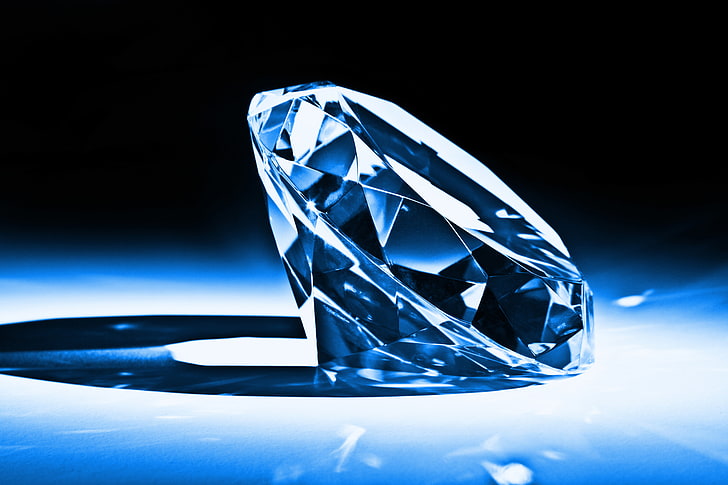WWF and Lab Grown Diamonds: Pioneering Sustainability in the Jewelry Industry
As concerns over the environmental and social impacts of natural diamond mining grow, organizations like the World Wide Fund for Nature (WWF) have started advocating for sustainable alternatives. This article explores how WWF is engaging with the emergence of lab-grown diamonds, highlighting their potential to reshape the jewelry industry while aligning with global conservation goals.
Introduction
Diamonds, known for their allure and enduring symbolism, traditionally come from deep within the Earth’s crust through mining processes that often have significant environmental consequences. However, advancements in technology have led to the development of lab-grown diamonds as a sustainable alternative. At the forefront of promoting sustainable practices, WWF has recognized the potential of lab-grown diamonds to mitigate the environmental footprint associated with traditional mining.
Understanding Lab-Grown Diamonds
Definition and Composition
Lab-grown diamonds are produced in controlled environments that replicate the natural diamond-growing process. They have the same chemical composition and physical characteristics as natural diamonds but are created under controlled conditions in laboratories.
How They Are Created
These diamonds are grown using either High Pressure-High Temperature (HPHT) or Chemical Vapor Deposition (CVD) methods. HPHT mimics the high-pressure conditions found deep within the Earth, while CVD involves depositing carbon atoms onto a substrate to form diamond crystals.
Key Differences from Natural Diamonds
While wwF and lab grown diamonds share identical properties with natural diamonds, they are distinguishable by their lack of natural flaws and inclusions, making them potentially even higher in quality.
Environmental Impact of Diamond Mining
Challenges and Concerns
Traditional diamond mining often involves significant land disturbance, water usage, and energy consumption. This can lead to habitat destruction, soil erosion, and water pollution, impacting local ecosystems and communities.
WWF’s Role in Environmental Conservation
WWF has been instrumental in advocating for responsible mining practices globally. By promoting sustainable alternatives like lab-grown diamonds, WWF aims to reduce the environmental footprint associated with traditional mining activities.
WWF’s Interest in Lab-Grown Diamonds
Motivations and Goals
WWF sees lab-grown diamonds as a promising solution to the environmental challenges posed by diamond mining. By supporting the development and adoption of these diamonds, WWF aims to encourage the jewelry industry to embrace more sustainable practices.
Partnership with Diamond Manufacturers
WWF collaborates with diamond manufacturers and retailers to promote transparency and ethical standards in the production and sale of lab-grown diamonds. This partnership helps ensure that these diamonds meet stringent environmental and social criteria.
Benefits of Lab-Grown Diamonds
Environmental Benefits
The production of lab-grown diamonds requires significantly less energy and water compared to mining natural diamonds. It also eliminates the need for large-scale land excavation, lab diamonds, reducing habitat destruction and environmental degradation.
Ethical Considerations
Lab-grown diamonds are conflict-free and do not contribute to issues like forced labor or human rights abuses often associated with diamond mining in certain regions. This ethical advantage appeals to consumers seeking responsible and socially conscious products.
Quality and Aesthetics of Lab-Grown Diamonds
Comparison with Natural Diamonds
Lab-grown diamonds are virtually indistinguishable from natural diamonds to the naked eye and under gemological testing. They offer the same brilliance, sparkle, and durability, making them a desirable choice for jewelry.
Consumer Perception and Market Trends
As awareness of environmental and ethical issues grows, more consumers are opting for lab-grown diamonds. This shift in consumer preference is driving market demand and encouraging jewelers to expand their offerings of sustainable diamond options.
Economic Implications
Cost Comparison
Initially, lab-grown diamonds were more expensive to produce, but advancements in technology have reduced production costs significantly. As a result, lab-grown diamonds are now more competitively priced compared to natural diamonds.
Market Demand and Growth
The market for lab-grown diamonds is experiencing rapid growth as consumers, especially millennials and Gen Z, prioritize sustainability and ethical sourcing in their purchasing decisions. This trend is reshaping the diamond industry and prompting traditional players to adapt.
Social Responsibility in Diamond Industry
Role of Consumers
Consumers play a pivotal role in driving sustainability in the diamond industry by making informed choices. By choosing lab-grown diamonds, consumers can support environmentally friendly practices and encourage more responsible behavior from jewelers.
WWF’s Advocacy Efforts
WWF continues to advocate for policies and practices that promote sustainable and ethical diamond sourcing. Through research, education, and partnerships, WWF aims to create a more transparent and sustainable diamond industry globally.
Future Outlook and Sustainability
Innovations in Diamond Production
Ongoing research and technological advancements are expected to further improve the efficiency and sustainability of lab-grown diamond production. Innovations may include new methods of carbon capture and recycling to minimize environmental impact.
WWF’s Long-Term Strategy
Looking ahead, WWF remains committed to advancing sustainable practices in the diamond industry. By collaborating with stakeholders and promoting responsible consumption, WWF aims to create a future where diamonds contribute positively to both people and the planet.
Conclusion
Lab-grown diamonds represent a significant opportunity to align luxury with sustainability in the jewelry industry. WWF’s support for these diamonds underscores their commitment to environmental conservation and responsible resource management. As consumer awareness grows, the demand for sustainable diamonds is expected to continue rising, driving positive change across the diamond supply chain.























